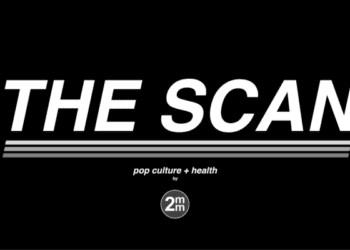Otoacoustic emissions may be an effective objective hearing test
Image: PD
1. Otoacoustic emissions (OAE) testing may be effective in the primary care setting to identify children with postnatal hearing loss.
2. OAE is an efficient, objective measure of hearing loss.
Study Rundown: Early detection and interventions for hearing impairment during childhood are crucial in preventing language disorders. While newborn hearing screening tests are standard in the United States, most children are only subjectively tested for hearing loss in early childhood and are not objectively tested for postnatal hearing loss until they start school. In addition, up to 40% of infants with hearing impairment are lost to follow-up after newborn screening. In the current study, researchers investigated the efficacy of an objective hearing measure often used in newborn screening, OAE, on postnatal hearing loss diagnosis in the primary care setting. OAE completion was relatively quick, with each exam taking only 4 minutes per child. Researchers propose that OAE may be an effective, quick, objective, preventative measure in the detection of hearing loss in young children, allowing for early detection and intervention of hearing difficulties.
Click to read the study, published today in Pediatrics
Relevant Reading: Using otoacoustic emissions to screen for hearing loss in early childhood care settings
In-Depth [prospective cohort study]: A total of 846 children were included in this multistep screening study. Children were initially tested with OAE and those who did not pass were retested 2 weeks later. Participants who did not pass the second OAE test were referred for audiologic evaluation. Hearing exams were conducted in the clinic setting during regular scheduled visits to see a primary care provider. Of the children screened, 814 (96%) passed the hearing screen and permanent hearing loss was identified in 3 (0.35%) children. 29 (3%) exited the study prior to completion. Of the 3 children identified with permanent hearing loss, 2 had previously passed a newborn screen, indicating that they experienced true, postnatal hearing loss. In the 0-5 age group, the rate of hearing loss was 1.2 per 1000 children, a finding consistent with previous research. The average time to complete the scan for 1 subject was 4 minutes.
By Brandon Childs and Leah H. Carr
More from this author: Early weight gain linked to obesity and cardiovascular health, Influenza vaccine safe for IBD patients, Incidence of pediatric melanoma is increasing, X-ray after foreign body removal by esophagoscopy is not cost effective, Procalcitonin levels linked with acute pyelonephritis
© 2013 2minutemedicine.com. All rights reserved. No works may be reproduced without written consent from 2minutemedicine.com. Disclaimer: We present factual information directly from peer reviewed medical journals. No post should be construed as medical advice and is not intended as such by the authors or by 2minutemedicine.com. PLEASE SEE A HEALTHCARE PROVIDER IN YOUR AREA IF YOU SEEK MEDICAL ADVICE OF ANY SORT. Content is produced in accordance with fair use copyrights solely and strictly for the purpose of teaching, news and criticism. No benefit, monetary or otherwise, is realized by any participants or the owner of this domain.






